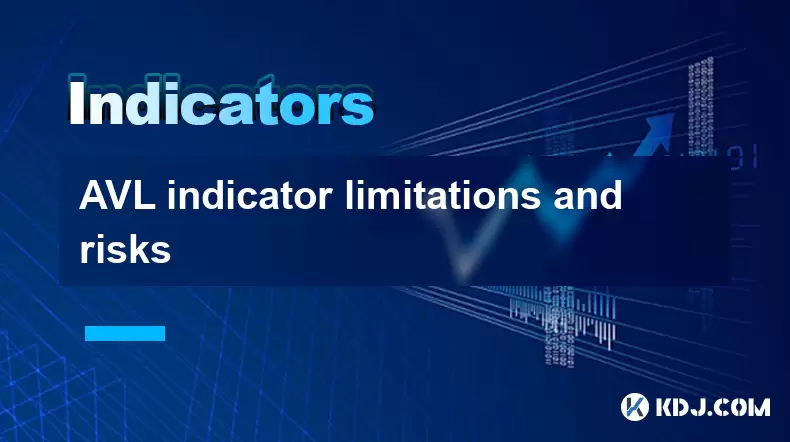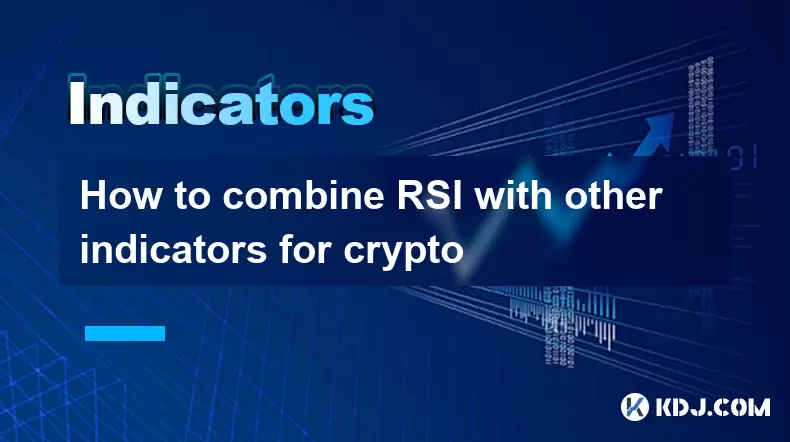-
 Bitcoin
Bitcoin $121,933.2517
3.55% -
 Ethereum
Ethereum $3,049.9099
3.48% -
 XRP
XRP $3.0092
8.28% -
 Tether USDt
Tether USDt $1.0001
-0.02% -
 BNB
BNB $704.5989
2.30% -
 Solana
Solana $167.5758
3.55% -
 USDC
USDC $0.9996
0.01% -
 Dogecoin
Dogecoin $0.2082
5.59% -
 TRON
TRON $0.3039
0.75% -
 Cardano
Cardano $0.7614
4.03% -
 Hyperliquid
Hyperliquid $48.6571
1.88% -
 Stellar
Stellar $0.4809
10.91% -
 Sui
Sui $3.9509
15.70% -
 Chainlink
Chainlink $16.1435
5.52% -
 Hedera
Hedera $0.2480
10.42% -
 Bitcoin Cash
Bitcoin Cash $517.3951
2.63% -
 Avalanche
Avalanche $21.8625
3.03% -
 UNUS SED LEO
UNUS SED LEO $9.0189
-0.12% -
 Shiba Inu
Shiba Inu $0.0...01387
5.71% -
 Toncoin
Toncoin $3.0449
1.39% -
 Litecoin
Litecoin $97.2652
3.15% -
 Polkadot
Polkadot $4.1345
4.42% -
 Monero
Monero $353.5986
5.52% -
 Uniswap
Uniswap $9.3278
10.99% -
 Dai
Dai $0.9998
0.00% -
 Ethena USDe
Ethena USDe $1.0004
-0.02% -
 Pepe
Pepe $0.0...01266
4.50% -
 Bitget Token
Bitget Token $4.4779
2.44% -
 Aave
Aave $325.3145
7.03% -
 Bittensor
Bittensor $420.5729
8.38%
AVL indicator limitations and risks
The AVL indicator helps assess buying/selling pressure in crypto but can give misleading signals due to volatility, lag, and volume distortions, so it should be used with other tools.
Jul 14, 2025 at 02:35 pm

Understanding the AVL Indicator in Cryptocurrency Trading
The Accumulation/Distribution Volume Line (AVL) is a technical indicator widely used by traders to assess the buying and selling pressure behind an asset's price movement. In the context of cryptocurrency trading, where volatility and volume play crucial roles, the AVL can offer insights into whether a digital asset is being accumulated or distributed by market participants. However, despite its usefulness, the AVL comes with several limitations and risks that traders must understand before incorporating it into their strategies.
AVL primarily uses volume and price data to calculate its values, which makes it sensitive to sudden spikes in volume that may not reflect genuine accumulation or distribution. This is especially relevant in crypto markets, where pump-and-dump schemes, whale manipulation, and high-frequency trading can distort volume metrics significantly.
AVL Indicator Limitations: Misleading Signals During High Volatility
One major limitation of the AVL indicator is its tendency to generate misleading signals during periods of extreme price volatility. Since cryptocurrencies are known for experiencing rapid and unpredictable price swings, the relationship between volume and price can become decoupled, making it difficult for the AVL to provide accurate readings.
For example, during a sharp sell-off triggered by negative news, large volumes may appear on the chart, but they don't necessarily indicate distribution in the traditional sense. Instead, they might reflect panic selling or algorithmic liquidation cascades. As a result, traders relying solely on AVL could misinterpret these movements as strong bearish signals, even if the underlying fundamentals remain intact.
Additionally, the AVL does not account for order book depth or bid-ask spread dynamics, which are particularly important in crypto exchanges with varying liquidity levels across platforms. This lack of granularity can further reduce the reliability of the indicator in fast-moving environments.
Risks Associated With Lagging Indicators in Crypto Markets
Like many technical indicators, AVL is a lagging tool — meaning it reflects past price and volume actions rather than predicting future ones. In fast-paced crypto markets, this lag can cause traders to enter positions too late or miss critical turning points entirely.
Consider a scenario where a cryptocurrency experiences a sudden breakout due to positive regulatory news. The price surges within minutes, and while the AVL eventually confirms the uptrend, the best entry points have already passed. Traders who wait for AVL confirmation may find themselves entering at near-peak prices, increasing the risk of losses when the market corrects.
Moreover, because AVL relies on cumulative calculations, it can take time for the indicator to adjust to new trends, especially after extended sideways consolidation phases. This delay can create false divergences or premature reversal signals that lead to incorrect trade decisions.
Volume Distortions in Cryptocurrency Exchanges
Another critical issue affecting the accuracy of the AVL indicator lies in the volume distortions present on many cryptocurrency exchanges. Unlike traditional financial markets, crypto exchanges often report inflated or manipulated trading volumes to attract users and increase platform visibility.
These artificial volume spikes can severely impact the AVL’s readings. For instance, if a token sees fake volume generated through wash trading or bot activity, the AVL may interpret this as strong accumulation, leading traders to make decisions based on false information.
To mitigate this risk, traders should cross-reference AVL signals with other tools such as on-chain analytics, exchange transparency scores, or real-time order book analysis. Using multiple sources helps filter out noise and provides a more reliable picture of actual market sentiment.
Furthermore, some advanced traders combine AVL with volume profile tools to identify key support and resistance areas backed by real volume. This hybrid approach can enhance decision-making and reduce reliance on potentially flawed volume data.
Overreliance on AVL Without Confirmatory Tools
Many novice traders fall into the trap of overrelying on a single indicator like AVL without incorporating additional confirmatory tools. While AVL offers valuable insights into volume-based sentiment, using it in isolation can lead to poor trading outcomes, especially in complex crypto markets.
Traders should consider combining AVL with complementary indicators such as moving averages, RSI, or MACD to validate trend strength and momentum. Additionally, candlestick patterns and chart formations can help contextualize AVL readings and improve timing precision.
For example, if AVL shows rising accumulation but the price remains range-bound, a breakout accompanied by increased volume could serve as a stronger signal than AVL alone. Conversely, if AVL indicates distribution but the price continues to rise, it might suggest a bullish divergence worth investigating further with other analytical methods.
It's also essential to monitor broader market conditions, including macroeconomic events, regulatory developments, and sector-specific news that could override technical signals. Ignoring these external factors while focusing solely on AVL increases the likelihood of missing critical market shifts.
Frequently Asked Questions
Q: Can AVL be used effectively on low-volume cryptocurrencies?
A: AVL is generally less effective on low-volume cryptocurrencies because insufficient trading activity leads to unreliable readings. In such cases, the indicator may fail to capture meaningful accumulation or distribution patterns, increasing the risk of false signals.
Q: How does AVL differ from OBV (On-Balance Volume)?
A: Both AVL and OBV track volume flows, but AVL incorporates price changes into its calculation, whereas OBV only considers closing prices. This difference means AVL can sometimes provide a more nuanced view of buying and selling pressure compared to OBV.
Q: Should I avoid using AVL altogether in crypto trading?
A: No, AVL can still be a useful tool when applied correctly. However, it should never be used in isolation. Combining AVL with other technical and fundamental analysis techniques enhances its effectiveness and reduces the chance of acting on misleading signals.
Q: Are there specific settings or parameters that optimize AVL for crypto markets?
A: There is no one-size-fits-all setting for AVL in crypto trading. Traders often experiment with different lookback periods and smoothing techniques to adapt the indicator to the volatility and volume characteristics of specific cryptocurrencies. Testing various configurations through backtesting is recommended before live deployment.
Disclaimer:info@kdj.com
The information provided is not trading advice. kdj.com does not assume any responsibility for any investments made based on the information provided in this article. Cryptocurrencies are highly volatile and it is highly recommended that you invest with caution after thorough research!
If you believe that the content used on this website infringes your copyright, please contact us immediately (info@kdj.com) and we will delete it promptly.
- UK Treasury Watch: Bitcoin Surge Lifts Companies Amidst Crypto Optimism
- 2025-07-14 16:30:12
- Satoshi Nakamoto: Bitcoin's Billionaire Mystery – Richest Person?
- 2025-07-14 16:50:12
- Finnovex South Africa 2025: Innovation and Expanding Inclusion in the Digital Finance Era
- 2025-07-14 16:30:12
- Pumpfun's $500M ICO: Memecoin Mania or the Future of Funding?
- 2025-07-14 14:30:12
- Dogecoin, XRP Price, and the Bitcoin Bull Run: What's the Hype?
- 2025-07-14 16:10:12
- Pump.fun's $PUMP Token Sale: A Wild Ride in the Memecoin Frenzy
- 2025-07-14 14:30:12
Related knowledge

Advanced RSI strategies for crypto
Jul 13,2025 at 11:01am
Understanding the Basics of RSI in Cryptocurrency TradingThe Relative Strength Index (RSI) is a momentum oscillator used to measure the speed and chan...

Crypto RSI for day trading
Jul 12,2025 at 11:14am
Understanding RSI in the Context of Cryptocurrency TradingThe Relative Strength Index (RSI) is a momentum oscillator used to measure the speed and cha...

Crypto RSI for scalping
Jul 12,2025 at 11:00pm
Understanding RSI in the Context of Crypto TradingThe Relative Strength Index (RSI) is a momentum oscillator widely used by traders to measure the spe...

What does an RSI of 70 mean in crypto
Jul 13,2025 at 06:07pm
Understanding the RSI Indicator in Cryptocurrency TradingThe Relative Strength Index (RSI) is a widely used technical analysis tool that helps traders...

How to avoid RSI false signals in crypto
Jul 13,2025 at 06:21pm
Understanding RSI and Its Role in Crypto TradingThe Relative Strength Index (RSI) is a momentum oscillator used to measure the speed and change of pri...

How to combine RSI with other indicators for crypto
Jul 12,2025 at 08:35am
Understanding the Role of RSI in Crypto TradingThe Relative Strength Index (RSI) is a momentum oscillator that measures the speed and change of price ...

Advanced RSI strategies for crypto
Jul 13,2025 at 11:01am
Understanding the Basics of RSI in Cryptocurrency TradingThe Relative Strength Index (RSI) is a momentum oscillator used to measure the speed and chan...

Crypto RSI for day trading
Jul 12,2025 at 11:14am
Understanding RSI in the Context of Cryptocurrency TradingThe Relative Strength Index (RSI) is a momentum oscillator used to measure the speed and cha...

Crypto RSI for scalping
Jul 12,2025 at 11:00pm
Understanding RSI in the Context of Crypto TradingThe Relative Strength Index (RSI) is a momentum oscillator widely used by traders to measure the spe...

What does an RSI of 70 mean in crypto
Jul 13,2025 at 06:07pm
Understanding the RSI Indicator in Cryptocurrency TradingThe Relative Strength Index (RSI) is a widely used technical analysis tool that helps traders...

How to avoid RSI false signals in crypto
Jul 13,2025 at 06:21pm
Understanding RSI and Its Role in Crypto TradingThe Relative Strength Index (RSI) is a momentum oscillator used to measure the speed and change of pri...

How to combine RSI with other indicators for crypto
Jul 12,2025 at 08:35am
Understanding the Role of RSI in Crypto TradingThe Relative Strength Index (RSI) is a momentum oscillator that measures the speed and change of price ...
See all articles

























































































